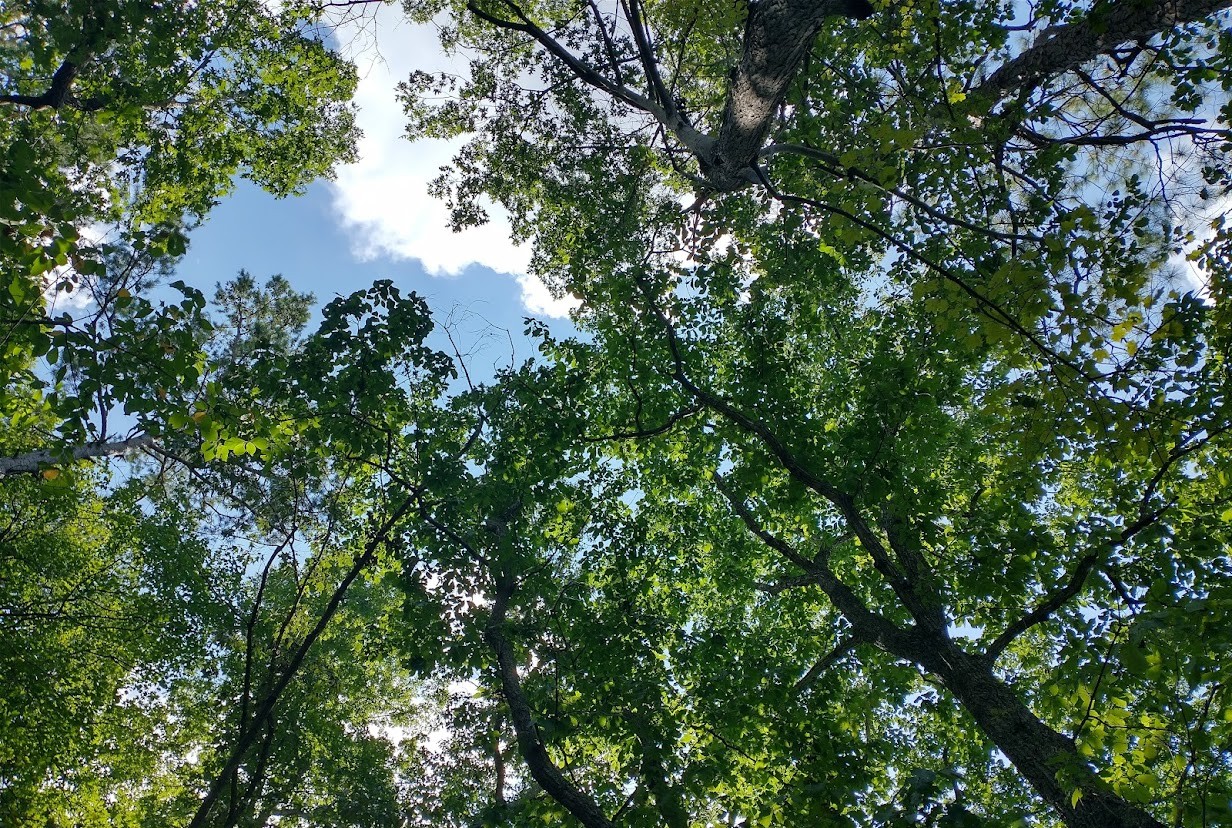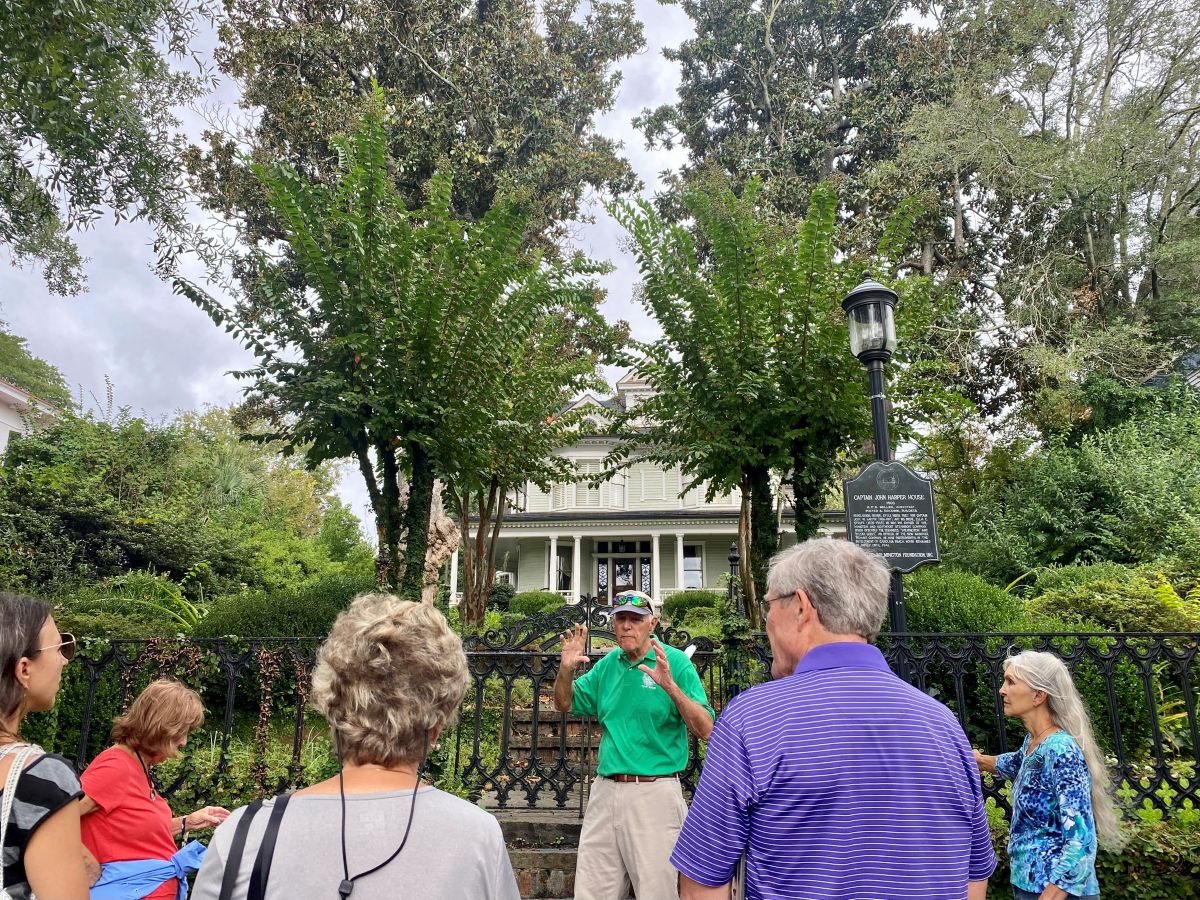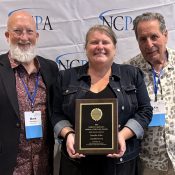
Think of it like a menu, one brimming with choices on how to slow the loss of tree cover and grow greener, healthier canopies in urban and rural communities.
Alliance for Cape Fear Trees has designed a guide offering just that, a policy resource to help local planning departments and governments, developers and community advocates shape green development.
Supporter Spotlight
“Code & Canopy” is 45 pages chock full of policies and practices that aim to create and maintain robust tree canopies, a core mission of the Wilmington-based nonprofit.
“Local planners, elected officials, they can look at this and see what is most applicable to their community and their community’s needs,” Alliance for Cape Fear Trees Executive Director Isabelle Shepherd said. “Cities and counties regularly update their land development codes and we plan to, piece by piece, introduce some of these ideas into our local codes and ordinances. This is a full menu of possibilities.”
The guide, which officially dropped Oct. 14, is a culmination of nearly a year of investigating codes and ordinances that shape development in the Lower Cape Fear Region, specifically Brunswick, Columbus, New Hanover and Pender counties.
But Shepherd, who, with the support of the alliance’s board members and senior advisers, researched and wrote the guide, believes that what she set out to create as a local effort can be extended to other regions throughout the state.
“We wanted to make sure that it was all well-researched, but also that it was presented in a way that’s easy for the public to understand and for local governments to enact,” she said. “Fundamentally, we’re trying to make it easy for local governments to stand up for trees.”
Supporter Spotlight
The guide entails a variety of policies and rules that municipalities and counties can adopt to promote slow tree canopy loss, boost healthy canopy growth, and strengthen existing protections.
For example, communities may establish “tree save areas,” which require developers to preserve a percentage of undisturbed, natural areas and protect significant trees, or those that hold particular importance because of their size, age, cultural significance, or rarity, within a building site.
The city of Charlotte has such a requirement in its unified development ordinance, or UDO.
Wilmington and New Hanover County have regulations protecting certain species of mature trees, but Shepherd said the alliance would like for the city and county to include protections for all species of trees that are 24 inches in diameter at breast height or larger.

“That said, other municipalities and counties across the region do not have any protections for mature trees. That’s something that we are pressing for,” she said.
The guide suggests ways municipalities and counties can incentivize developers to preserve natural areas.
It also highlights several policies local governments can implement to protect and grow tree cover, including establishing conservation resource areas, revising performance subdivision rules, identifying high-value nature areas and strengthening zoning protections, and requiring annual training that focusing on tree protection protocols for general contractors and site supervisors.
“Code & Canopy” includes samples of resolutions municipal and county boards may adopt and letters those boards can send to the North Carolina General Assembly to advocate state legislators restore local zoning powers.
In December 2024, legislators amended Senate Bill 382, known as the Disaster Recovery Act of 2024, restricts the authority of local governments to “down-zone,” or rezone a property to reduce the density or intensity of a how a piece of land may be developed.
Alliance for Cape Fear Trees was founded 10 years ago as an advocacy organization for urban forestry depleted by coastal storms such as hurricanes, rapid development, and climate change.
The organization planted more than 3,000 native trees and distributed more than 15,000 throughout the region. It also offers educational programs and events that teach residents how to care for newly planted trees.
Since 2016, Wilmington’s tree canopy has shrunk from covering 48% of the city to about 40% today.
In unincorporated New Hanover County, more than 3,000 acres of canopy disappeared between 2014 and 2022.
Shepherd attributes those losses in what she described as a collision of climate stress and development pressure.
“Absolutely hurricanes like Florence play a major role in that, but development is also a primary driver of this loss and the costs go beyond aesthetics,” she said. “Mature forests intercept hundreds of millions of gallons of stormwater, reducing flood risk and improving water quality. Their roots stabilize soils. Their shade cool streets. When large trees and natural areas are removed without adequate replanting, the region loses vital green infrastructure.”
As part of their researcher, the alliance reached out to municipal and county planners, as well as developers who “demonstrated care toward the canopy,” for feedback.
A New Hanover County spokesperson said in an email that “Code & Canopy,” “will serve as a resource guide for the county’s Sustainability Manager to collaborate with departments in developing or updating policies that advance the county’s Strategic Plan goals for Sustainable Land Use and Environmental Stewardship.”
McKay Siegel, a partner with Chapel Hill-based development firm East West Partners, a sponsor of Alliance for Cape Fear Trees, lauded the organization for extending an invitation to developers to get their input.
“Developers don’t wake up and think about cutting down trees,” he said. “Whenever you take something from raw land to build, it’s not as though all you consider are the trees. There’s a whole lot of other factors – zoning, parking, stormwater. I think that ACFT is really doing their best to wrap their heads around some of the compromises that can be made in all the different areas, and what’s really best for the trees. I think ‘Code & Canopy’ is a good start. At least they’re giving us an opportunity to tell our side of the story, which is really neat and I think that the document reflects a lot of those conversations and hopefully it’s a good launch for the future.”







